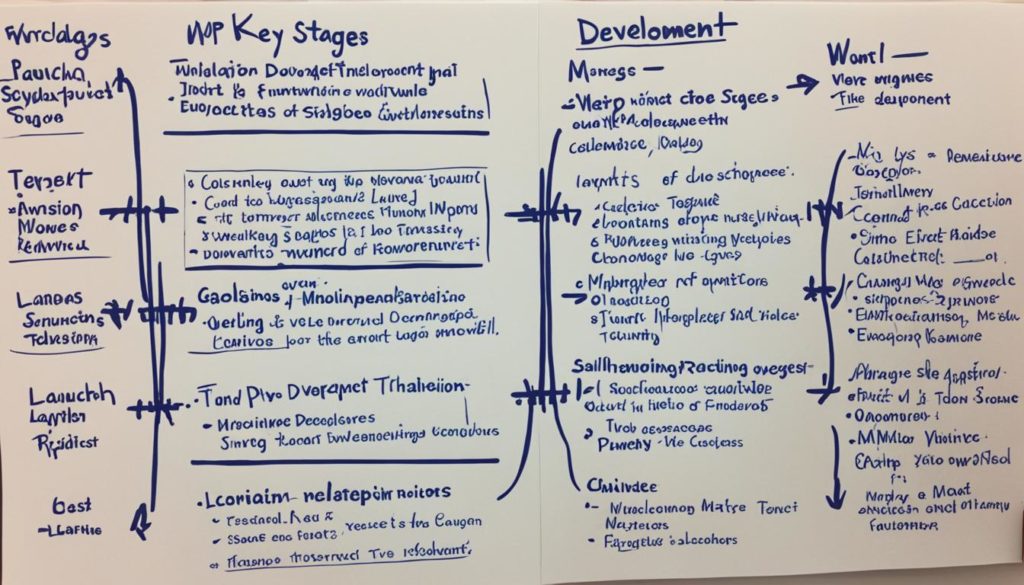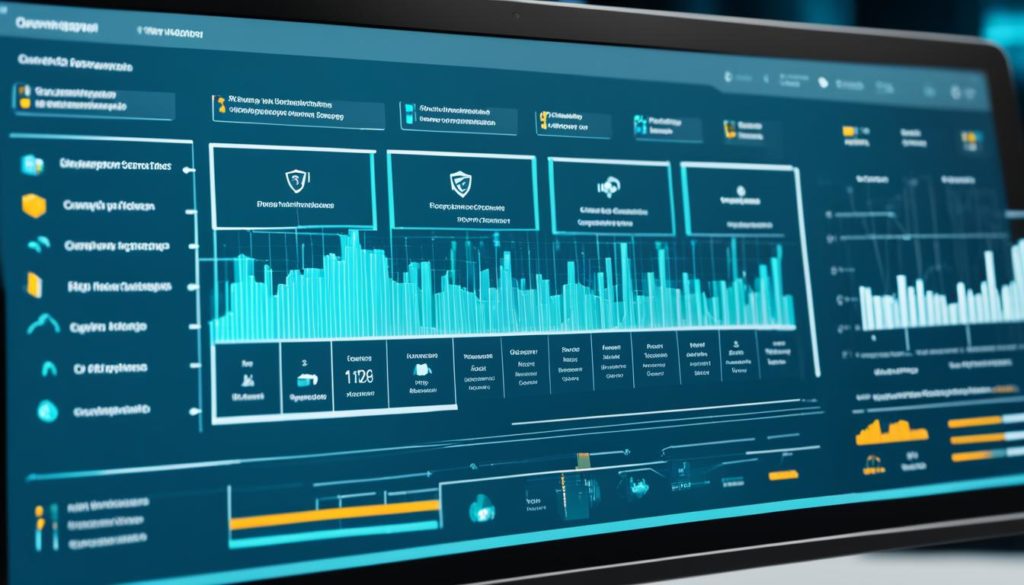
The global cloud computing market is expected to grow from $371.4 billion in 2020 to $832.1 billion by 2025. This shows a big shift towards using cloud applications, highlighting their importance to businesses around the world. Cloud computing is more than remote servers; it’s changing how we design, launch, and manage SaaS products.
Understanding cloud applications can be complex, with security challenges in multi-cloud environments. The old ways of doing things don’t work anymore. Cloud-native apps need quick, reliable, and strong protection for their important assets.
Today’s cloud technology is complex and traditional risk management tools can’t keep up. They fail to provide the deep insights needed to quickly handle threats that are constantly changing.
Checkmarx Cloud Insights emerges as a solution, offering deeper insights by linking data throughout the software development lifecycle and different runtime environments. This advanced level of security helps us move smoothly to cloud services. It encourages smart ways to reduce risks, a key part of understanding cloud applications.
We now choose quality over quantity in our solutions. This approach gives us not just data, but the knowledge to face fast-evolving cyber threats.
Key Takeaways
- Cloud computing is quickly growing, making it crucial to deeply understand and secure cloud applications.
- Old risk management tools aren’t enough; flexible solutions are essential for protecting cloud technology today.
- Checkmarx Cloud Insights provides actionable insights to enhance security throughout the software development and runtime phases.
- Understanding Cloud Applications is key for managing and reducing risks in the modern cloud service landscapes.
The Evolution of Cloud Applications in a Multi-Vendor Ecosystem
The cloud migration journey and the use of different cloud solutions show that our work environment has changed. It’s dynamic and relies on many parts. Because of this, we had to move from old security ways to better cloud infrastructure management.
When we look at cloud deployment with many vendors, it’s obvious we need smart management solutions. Software as a Service (SaaS) helps by offering flexible options. These improve how fast a company can adapt and its data safety.
Checkmarx Cloud Insights is a game-changer. It uses Attack Path Analysis and works well with big cloud providers like AWS. This means companies can really step up their cloud security, making cloud solutions essential.
Now, there’s a move towards smarter, more connected ways to handle cloud app risks. The table below shows how cloud security tools have changed. It highlights the need for smarter, integrated solutions in today’s environments.
| Feature | Traditional Tools /th> | Modern Solutions /th> |
|---|---|---|
| Integration Capabilities /td> | Limited | Extensive with multiple cloud providers |
| Data Management /td> | Manual aggregation | Automated, real-time processing |
| Risk Assessment /td> | Generic | Customized to specific business needs |
| Usability /td> | Complex | User-friendly interfaces |
Improving cloud app security shows that modern cloud solutions not just manage tasks easier but also aim for strong security against new threats.
Decoding the Complexity: Secure Application Deployment in the Cloud
Moving to flexible cloud infrastructures means we must integrate advanced cloud services and technologies. This shift helps with software development and improves how we deploy and manage applications in the cloud.
Transition from Static Environments to Adaptive Cloud Infrastructure
The shift to adaptive cloud infrastructures changes how companies handle software development and infrastructure. By using new solutions, businesses can reduce the number of alerts they get. They can focus on addressing the most dangerous internet threats.
Prioritization of Threats: The Role of Attack Path Analysis
With advances in cloud technology, Attack Path Analysis has become critical for dealing with threats. This method shows the possible steps of a cyber attack. It helps companies create better defense strategies quickly.
This is especially important in environments with data spread across multiple clouds. It helps improve reactions to potential security breaches.
Integrations That Empower: Connecting With AWS and Other CNAPP Vendors
Working with platforms like AWS and CNAPP vendors, such as Sysdig and Wiz, improves security management. These partnerships provide a detailed view of security issues. They support strong defense strategies with in-depth data analysis and instant updates.
By highlighting the usefulness of AWS’s serverless solutions, these efforts make it easier for all businesses to protect their online resources effectively.
To wrap up, the growth of cloud services highlights the need for companies to adapt fast and safely. Using leading SaaS platforms in an adaptable cloud setup enhances the development, scaling, and security of applications, fulfilling both current and future business requirements.
Cloud Applications Understanding: The Need for Dynamic Application Security
In the world of cloud technology, strong application security is a must. Cloud computing changes how we handle software. It moves us to dynamic, cloud-native applications. Yet, this brings risks that we must tackle to keep our digital world safe.
Application Security Posture Management (ASPM) is vital for cloud-centric businesses. With increased cloud use, finding and fixing risks fast is key. ASPM works well with the ongoing updates and improvements that cloud-native applications need. Static security can’t keep up with the fast, ongoing changes in cloud settings.
Cloud services mix security right into making the application. This makes it easier to spot threats and ignore false alarms. This focus makes the application more secure and keeps the team on track.
For more on cloud application security, see cloud application security testing. You’ll find useful information for today’s cloud-first IT environment.
When we focus on cloud tech for security, we’re ready for now and later. Automation improves testing and spots problems early. This helps avoid data issues, which are a big worry with cloud stuff. Many groups now do regular checks and tests to stay safe online.
date>
| Security Concern | Relevance in Cloud Computing | Mitigation Strategy |
|---|---|---|
| Data Loss or Leakage | High | Implementing advanced encryption and continuous backups |
| API Vulnerabilities | Medium | Regular API security audits and authentication controls |
| Account Hijacking | High | Multi-factor authentication and continuous monitoring |
| Insider Threats | Medium | Role-based access controls and regular security training |
We are fully focused on better cloud application security. As digital spaces grow, our methods need to guard us now and plan for the future. Using cloud services and tech with security in mind is key. This lets us get the most from cloud computing while being safe and reliable for users.
Cloud Computing Transformation: Flexibility, Scalability, and Cost-Effectiveness
Cloud computing leads in digital transformation. It lets businesses act fast and be innovative in the competitive world. With scalable cloud solutions, operating strategies evolve. We can scale up resources quickly, moving past old data center limits.
Scaling Operations with Cloud Technology
Scaling means more than just more data or users. It changes how business works. Cloud applications react fast to the market, offering IaaS, PaaS, and SaaS for different needs. We save money by using cloud infrastructures, paying only for what we need.
Mobility and Remote Accessibility: Empowering the Workforce
The ability to work from anywhere changes collaboration. Teams work online, using cloud power to keep business smooth, miles apart. This makes work efficient and productive, well beyond just being convenient.
Exploring the Financial Implications of Migrating to Cloud Services
Moving to cloud services means spending tech money wisely. With pay-as-you-go, we focus our funds better. This shift isn’t just about day-to-day operations; it’s about smart financial planning. With security and deals like Google Cloud’s $300 credit, the cost benefits match the operational ones.
FAQ
What exactly is Cloud Applications Understanding?
Understanding Cloud Applications means knowing a lot about cloud computing. This includes the use of software as a service (SaaS) and other tech in the cloud. It’s about recognizing different services and how to use them for a business’s needs.
How have cloud applications evolved in a multi-vendor ecosystem?
In a multi-vendor ecosystem, cloud applications have become more connected. They work better together, using multiple cloud providers. Businesses need a good plan for moving to the cloud, setting up their cloud infrastructure, and deploying it. This ensures everything works well together for solid cloud solutions.
What are the key challenges when deploying applications in the cloud?
Moving applications to the cloud can be tricky. Issues include securing them across different platforms and handling complex setups. You also have to fit older systems into the new cloud world. Protecting cloud apps and cloud development needs new tech and approaches.
How important is it to transition from static environments to adaptive cloud infrastructure?
Switching to adaptive cloud infrastructure is very important for businesses today. It makes them more flexible and fast, helping them keep up with market and tech changes. This switch lowers the chance of outdated systems and can save money.
Why is prioritizing threats through Attack Path Analysis important in cloud security?
Using Attack Path Analysis to prioritize threats is a big deal in cloud security. It lets organizations focus on the biggest security risks first. Understanding how cyber attacks could happen helps companies respond better, making them safer overall.
What integrations are necessary for empowering secure cloud application deployment?
For safe cloud app deployment, integrating with top cloud providers like AWS is essential. Teaming up with Cloud-Native Application Protection Platform (CNAPP) vendors is also key. These steps give better insight into applications and infrastructure. They improve decision-making and boost security and compliance.
How can dynamic application security benefit our cloud applications understanding?
Dynamic application security helps because cloud applications are always changing. It offers real-time detection of threats and fixing of weak spots. This makes sure security keeps up with updates and new releases of applications.
What makes cloud computing transformational in terms of business operations?
Cloud computing changes the game by offering flexibility, scalability, and cost savings not possible before. Companies can grow without big upfront costs, work from anywhere, and only pay for what they need.
How does scaling operations with cloud technology benefit businesses?
Using cloud technology to scale lets companies easily adjust their IT resources. This aligns with the needs of the market and customers. It means more efficiency, lower costs, and more chances to try new things.
What are the advantages of mobility and remote accessibility in cloud computing?
The benefits include letting employees work from anywhere, improving teamwork, and boosting productivity. It also supports a spread-out workforce, which brings in more talent and different viewpoints.
How do financial implications affect business decisions regarding cloud services migration?
Moving to cloud services can change financial planning for businesses. It often means lower and more predictable costs. With a pay-as-you-use plan, there’s no need for big investments in equipment or software. Companies can adjust spending based on their needs.
Future App Studios is an award-winning software development & outsourcing company. Our team of experts is ready to craft the solution your company needs.










